It burns 4,000 tons of wood chips a year, circulates 9,000 gallons of heated water around campus every nine minutes, and has cut the University’s annual heating costs by more than 70 percent. Here’s a look inside the University’s Biomass Central Heat Plant.
By Grace McIntosh ’22, Photos by Isaiah Wilson-McFarlane ’20
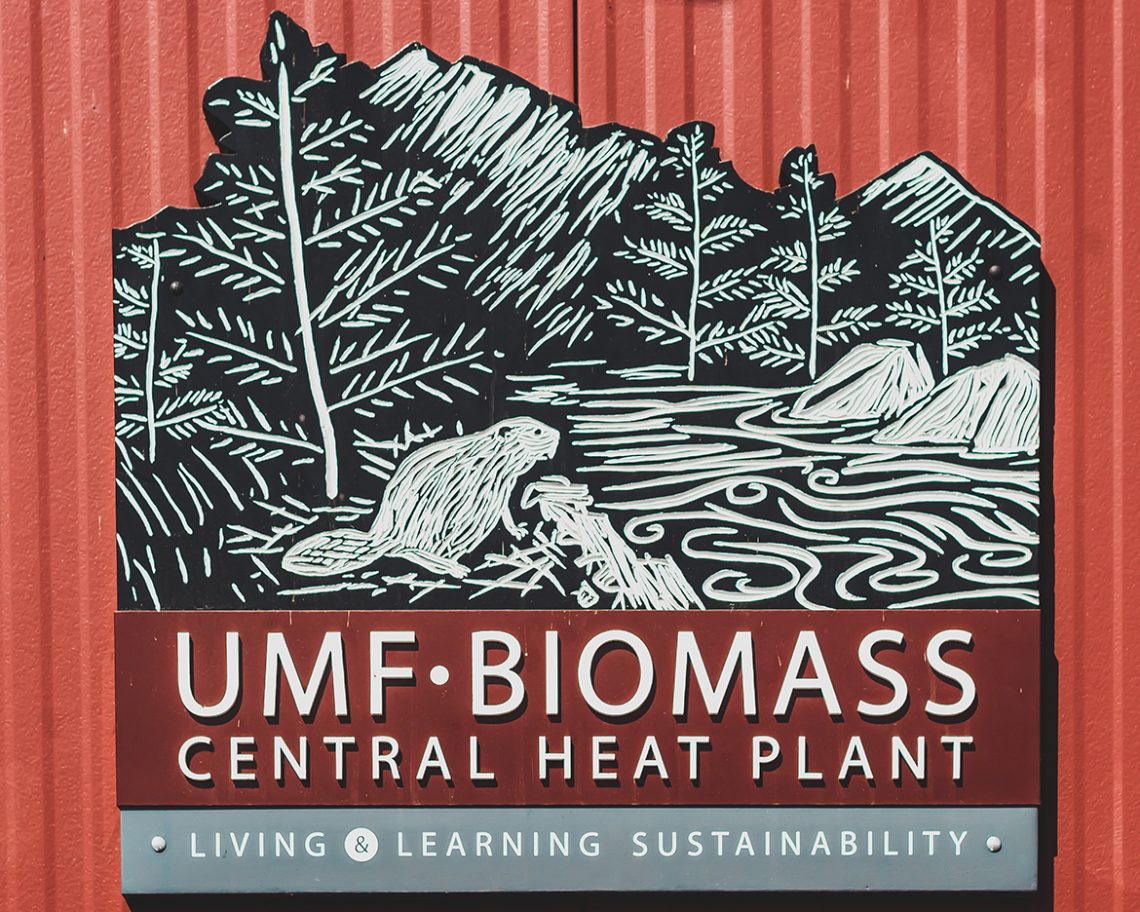
Three years after its initial firing, interest in UMF’s Biomass Central Heat Plant may have cooled a bit. Newcomers to UMF may pass by the Lot 9 building, adjacent to Frances Allen Black Hall, unaware of its impact on the University, local economy, and the environment.
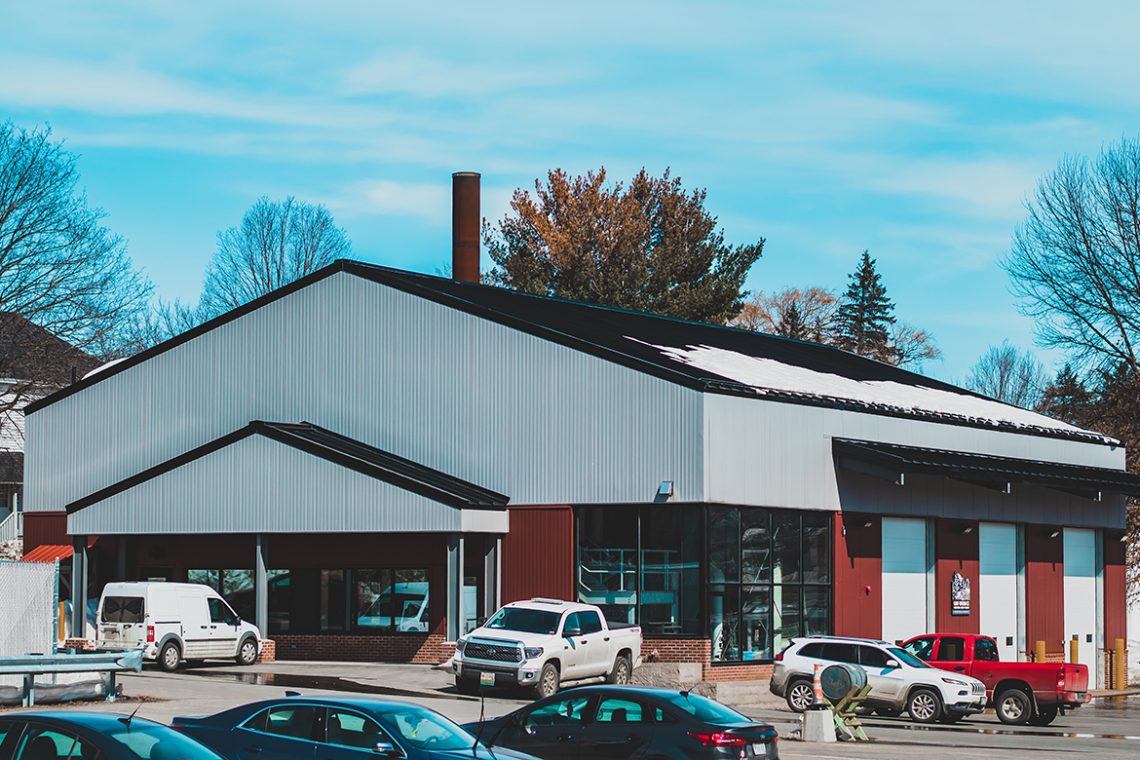
UMF’s biomass plant has cut heating costs from $1.2 million to approximately $350,000 a season.
From the outside, one can see several white pipes and other monstrous machines through the glass panes, which offer a glimpse of the engineering that has reduced Farmington’s carbon emissions by 32 percent. Passersby often stop to witness the large clouds of water vapor ascending high above the plant. On colder days, the vapor forms billowing plumes.
Well into the plant’s third heating season, Lucas Kellett, Assistant Professor of Anthropology and the University’s Sustainability Coordinator, takes us through the steps of how the plant performs to keep many campus buildings warm.
A monotone hum of furnaces and conveyor belts working in unison greets the plant’s workers and spectators. The side door opens up to a small conference room that overlooks the floor through a wall of glass, where the action transpires.
“The vision for this space was the idea it could be a classroom for students,” Kellett says of the conference room. “The big windows were important so that tour groups and school groups could come see and we could explain the process.”
Entering the floor, the monotone hum grows more intense. The first thing that catches the eye is the cleanliness of the plant. Nothing, not even a single wood chip, is out of place.
The prominent smell of maple and oak can be traced to a 17-foot-deep chamber that holds 120 tons of hardwood chips. “Trucks will back up, and dump them in here,” says Kellett, pointing at garage doors positioned above the chamber. “Each truck contains about 30 tons of chips.”
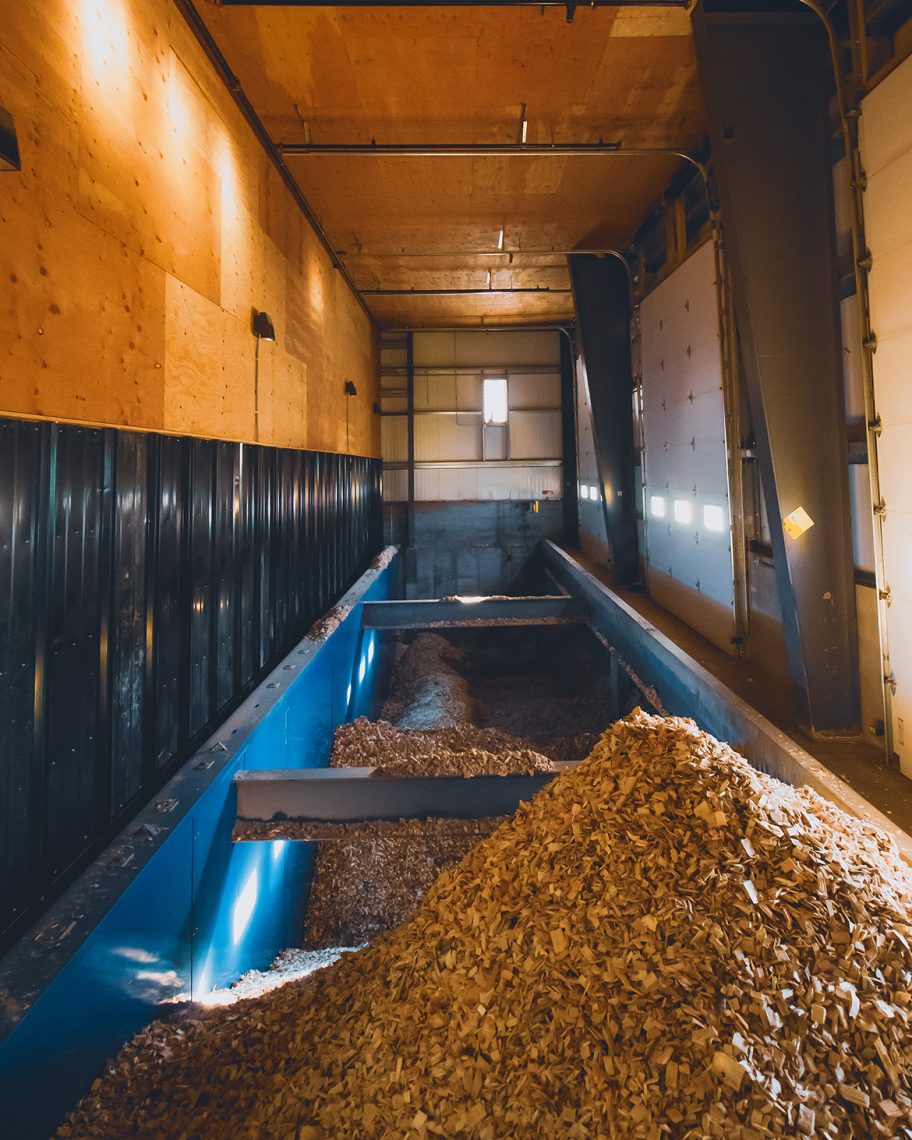
4,000 tons of chips pass through the delivery room within UMF’s Biomass Central Heat Plant each year.
Colossal augers at the bottom of the swimming pool-sized chamber pull the wood chips onto a conveyor belt up to the furnace. “It looks like a rollercoaster,” says Kellett with a laugh.
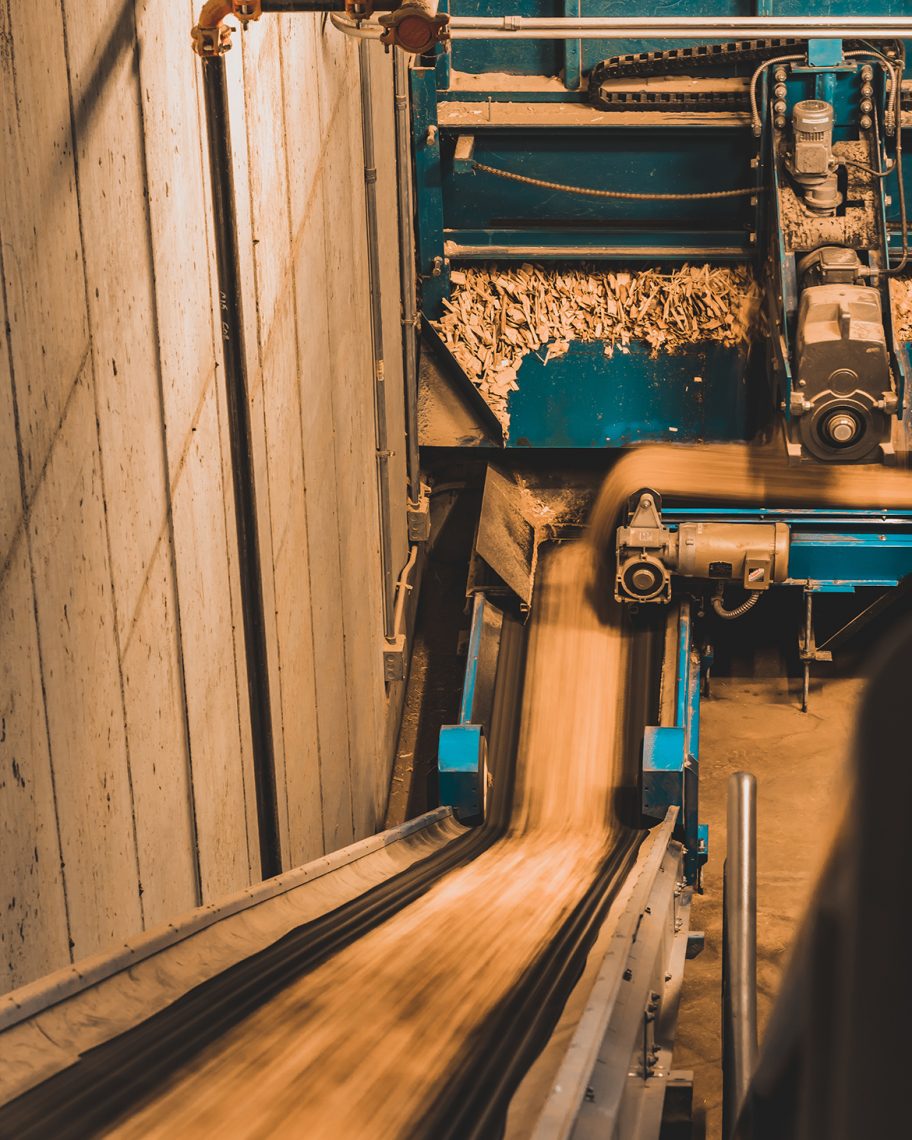
Wood chips zip along a conveyor belt, en route to the furnace.
The furnace, which burns 80 pounds of chips per minute, is like a home fireplace — except 200 times bigger. “It can be very powerful,” Kellett explains. “It’s sort of like a Ferrari with an accelerator that we never get to floor. It’s always at 25 percent of its capacity.”
Ash from the furnace — clean enough to win approval by the Maine Organic Farmers and Growers Association for use on crop soil — is trapped and later used to help grass grow on campus. “We sprinkle it on the athletic fields,” Kellett says. “The soils are acidic here, so adding ash neutralizes the pH.”
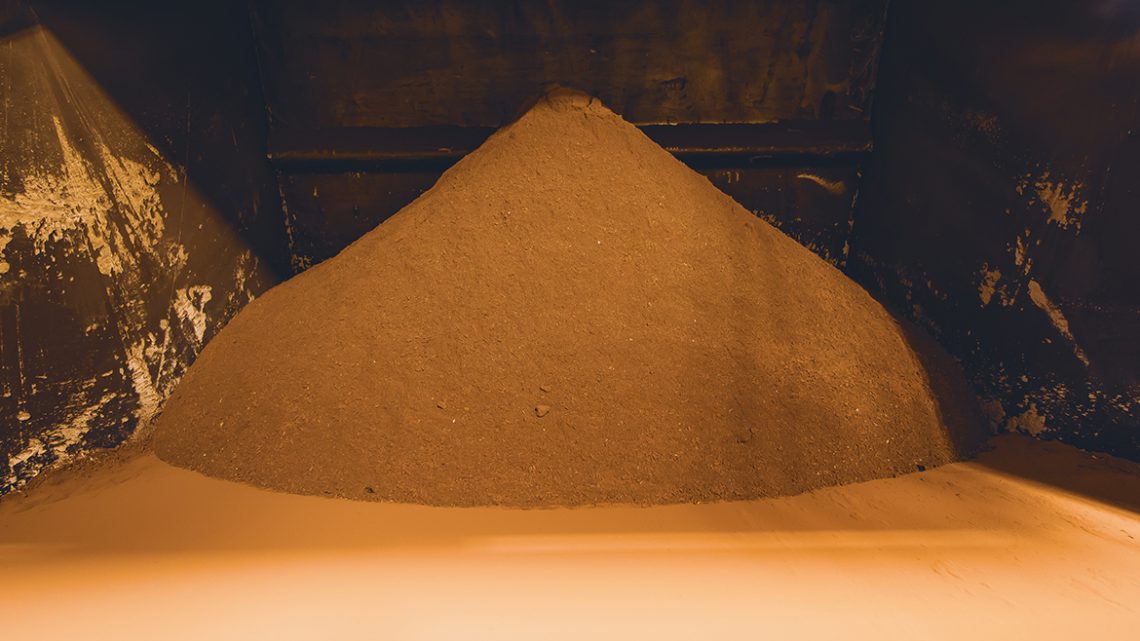
The plant’s red ash, caught before it can exit the vent stack, is clean enough to enrich crop soil.
“The blue box on top is where the water comes in to be heated,” Kellett explains, pointing above the furnace. “We call it the boiler.” Water is pumped up into the ceiling and put into the boiler before leaving the plant through a system of pipes.
The white pipes, which can been seen from the outside of the plant, circulate 9,000 gallons of heated water around campus every nine minutes. “The water pressure in the pipes is 20 pounds per square inch,” says Kellett. “When it’s heated, it leaves the building at about 200 degrees, returning at about 180 degrees.”
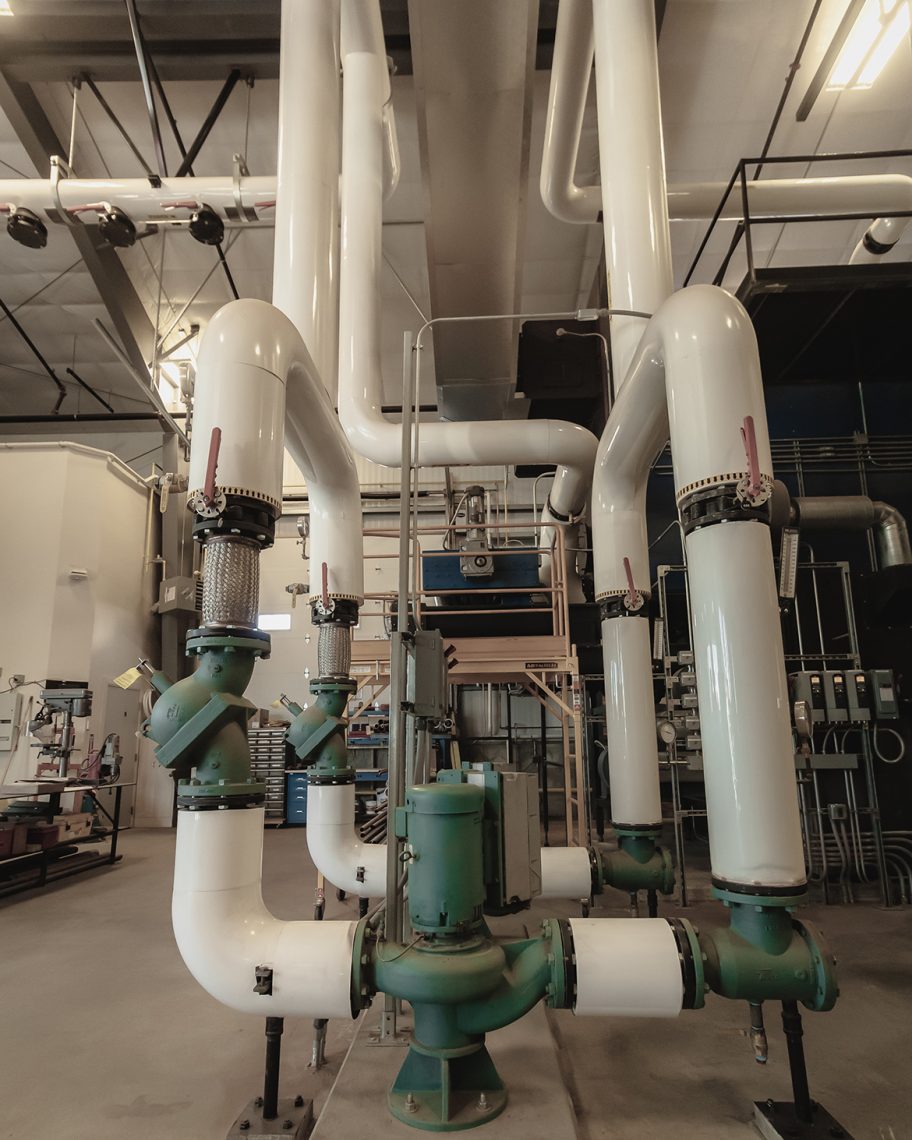
Two 40-horsepower electric pumps move water through a maze of piping within the biomass plant and — once heated to 200 degrees — out to campus buildings.
In fact, Farmington’s is the biggest heat-only biomass plant in the state, burning some 4,000 tons of chips per year. “I think one thing that a lot of students aren’t aware of is that the plant is just one part of an infrastructure that heats hot water going to half of the campus buildings,” Kellett says. “It’s all underground, so when we say ‘the plant’ we’re talking about the plant, plus all what’s underground connecting to all these buildings.”
The plant is completely computer-controlled, meaning the temperature regulates itself like a giant thermostat for 24 campus buildings, including UMF’s Fitness and Recreation Center, as well as Dakin, Frances Allen Black, Lockwood, Preble, Scott, and Ricker halls.
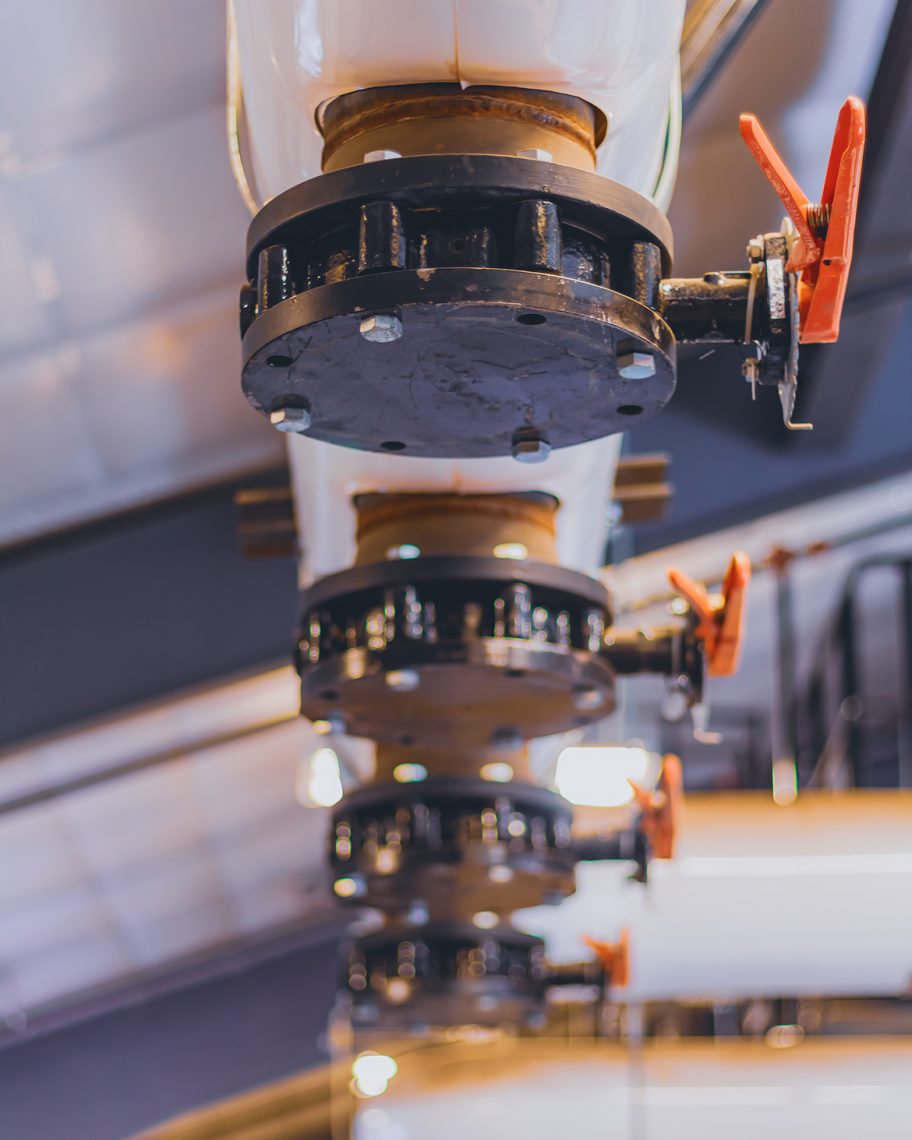
Wilson-McFarlane ’20 finds artistry in the biomass plant’s plumbing.
Jason Beckler, mechanical manager at UMF, keeps track of the plant. When Beckler is not at the facility, an app on his phone can alert him if there’s an issue. “If I was heating with oil, I’d be getting five truckloads a week,” Beckler says. “Wood chips require a lot less traffic coming through campus.”
Traffic isn’t the only thing reduced by the $11 million project. Since the Biomass Plant has come online, the University’s heating costs have been cut from $1.2 million to approximately $350,000 a season. Eventually these savings will pay for the plant itself, which is estimated to break even in 10 to 12 years. “Long-term, this was a great investment,” says Kellett.
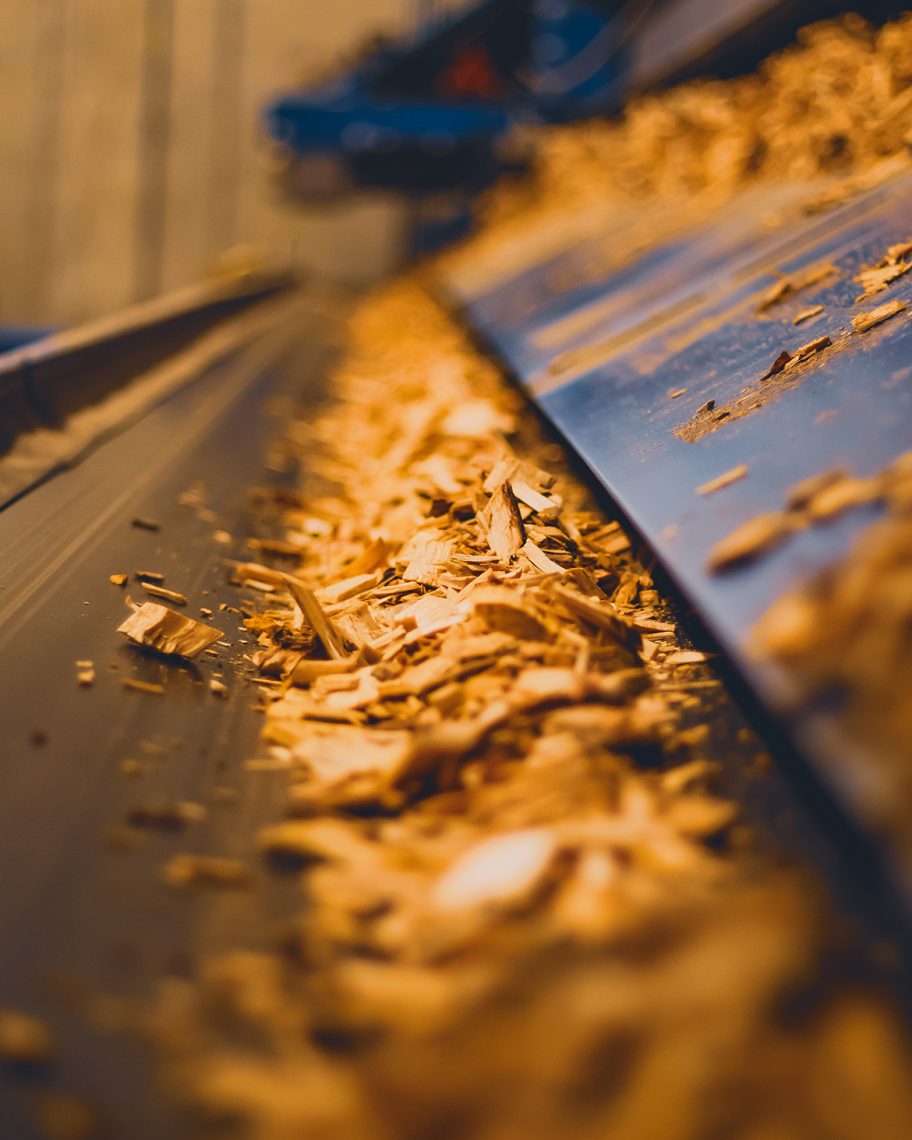
The University’s biomass plant furnace consumes 80 pounds of chips per minute.
The Biomass Plant is also a carbon-neutral alternative for the once exclusively fossil-fuel burning campus.
“When we burn a piece of wood, carbon dioxide is released into the air and then over time carbon dioxide is taken back up by new trees,” Kellett explains. Over the long-term of 50 to 60 years, wood is carbon neutral.
Kellett says that while wood may not be the perfect fuel source, it supports the local forestry economy within a 60-mile radius of campus. “We’ve contributed a couple hundred thousand dollars to wood harvesters around Farmington,” he says. “If we were to buy heating oil from another company, a lot of those dollars would leave the state.”
What’s more, Kellett says that the University’s wood-chip supplier, Cousineau Wood Products of Anson, follows sustainable harvesting practices, such as selective cutting and planting saplings to replenish forests.
“We’re making sure they’re not destroying the ecosystem and causing erosion and impacting wildlife,” Kellett says.
Just about any way one looks at it — reduced heating costs, lower carbon emissions, or support for local forestry-based business — the Biomass Central Heating Plant has become a landmark of efficiency at UMF, for now and well into the future.
About the author

Grace McIntosh ’22, editorial assistant for Farmington First, is a first-year student from Farmington, Maine. She enjoys documenting the life of the University and sharing her accounts with the UMF alumni community. (Photo by Brandon Cardona ’20.)
About the photographer

Isaiah Wilson-McFarlane ’20, the regular contributor of “A Look Through Isaiah’s Eyes,” enjoys photographing and writing about the science behind the natural splendor of Maine.

